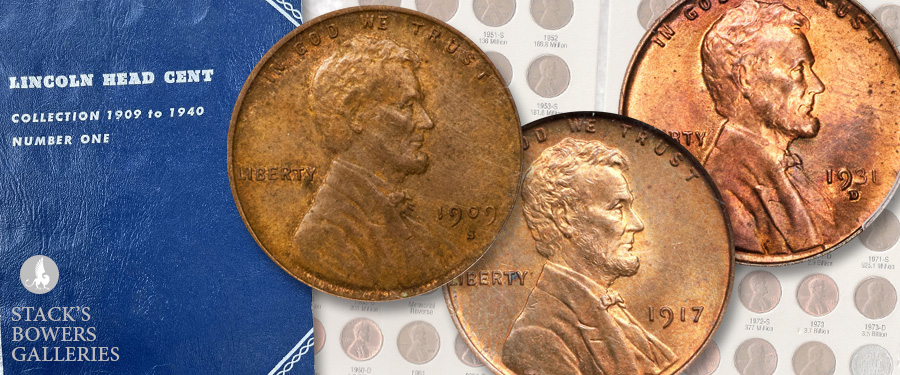
For decades, the cent (colloquially known as the penny) has provided a gateway for many budding collectors. As a kid (like many, I’m sure!), I spent endless hours sorting through bank bags of pennies in a vain attempt to complete my blue Whitman albums. After months of searching, I was hooked, but realized—after way too long–that I’d have to start saving my allowance and buy the missing key dates at my local coin shop.
The search for the1909-S V.D.B., the 1909-S and the 1914-D were like a daily Easter egg hunt at my house. And no, we never found any of those, let alone a 1922-P or 1955 Doubled Die. But that wasn’t really the point. The 1924-D became the new 1909-S V.D.B. to me and so on down the line.
The Lincoln cent is still the most collected coin in America, and possibly in the history of collecting. It generates a large percentage of our valuation calls at Stack’s Bowers Galleries. The mystique of the key dates, of finding that “easter egg,” has only held up with time. Even Caity Weaver’s recent well-written and enjoyable front-page article in the NY Times Magazine (9/1 online, 9/15 in print), which brought the foolishness of the penny into question, will not alter that.
But do the numbers support searching out and saving for those storied “key dates”? Or would I have been better off saving the innumerable high grade coins from the 1910s, 1920s and 1930s that I encountered? The PCGS population numbers would seem to point in that direction:
Population of PCGS MS-64 RB (as of 9/17/24):
1909-S V.D.B.: 2112
1911-P: 393
1921-P: 333
1931-P: 272
But, the corresponding values do not (PCGS guide):
1909-S V.D.B.: $3,200
1911-P: $110
1921-P: $135
1931-P: $130
Professional numismatists are quick to point out reasons for the discrepancy: The 1909-S V.D.B. is rarer in sheer terms. It’s the one “must own” Lincoln penny for serious type collectors. It will never go out of vogue. Many more have been graded because the stakes are higher; there are legions of counterfeits; the grading economics don’t work on common dates and so on. And again, they are right.
But should the penny meet its timely Canadian end with a resulting surge of interest, the picture may change. So keep your eyes open a little wider the next time a semi-complete book crosses your path.
If the 1909-S V.D.B cent is on your want list, Stack’s Bowers Galleries is featuring a lovely PCGS AU-55 1909-S V.D.B. this week in our September 25 Collectors Choice Online Auction. While you are there, you might want to check out its 1917 counterpart (NGC MS-64 red) or an equally attractive 1931-D (PCGS MS-64 RB).





